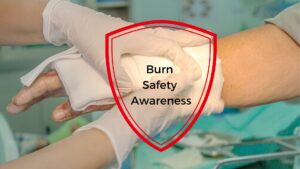Disaster Preparedness | Family Preparedness Planning
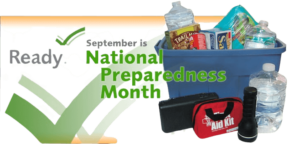
During National Preparedness Month, we underscore the important responsibility Americans have to be ready for emergencies in our homes, businesses, and communities. Some areas of the western US have wildfires like the Rum creek fire in Oregon, California, New Mexico, and many others. We never know when an emergency or disaster may hit your area. Now is the time to be prepared.
The Department of Homeland Security’s Ready campaign highlights preparedness steps, including having an emergency supply kit, making a family emergency plan, and becoming informed about different types of emergencies. After preparing themselves and their families, Americans can take the next step and get involved in helping to prepare their communities for all types of emergencies. Below are some simple tips to help you start building your own disaster kit.
Survival Kit List
*** When preparing for a possible emergency situation, it is best to think first about the basics of survival: fresh water, food, clean air, and warmth.
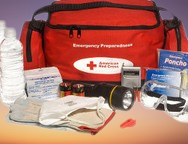
What are the recommended items to include in the Emergency Supply Kit?
- Water, one gallon of water per person per day for at least three days, for drinking and sanitation
- Food, at least a three-day supply of non-perishable food
- Battery-powered or hand crank radio and a NOAA Weather Radio with tone alert and extra batteries for both
- Flashlight and extra batteries
- First aid kit
- Dust mask, to help filter contaminated air and plastic sheeting and duct tape to shelter-in-place
- Moist towelettes, garbage bags, and plastic ties for personal sanitation
- Wrench or pliers to turn off utilities
- Can opener for food (if kit contains canned food)
- Local maps
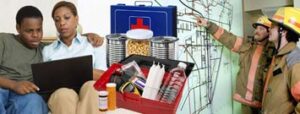
What are the additional items to consider adding to an Emergency Supply Kit?
- Prescription medications and glasses
- Infant formula and diapers
- Pet food and extra water for your pet
- Important family documents such as copies of insurance policies, identification and bank account records in a waterproof, portable container
- Cash or traveler’s checks and change
- Emergency reference material such as a first aid book or information from www.ready.gov
- Sleeping bag or warm blanket for each person. Consider additional bedding if you live in a cold-weather climate.
- Complete change of clothing including a long-sleeved shirt, long pants and sturdy shoes. Consider additional clothing if you live in a cold-weather climate.
- Household chlorine bleach and medicine dropper – When diluting nine parts water to one part bleach, bleach can be used as a disinfectant. Or in an emergency, you can use it to treat water by using 16 drops of regular household liquid bleach per gallon of water. Do not use scented, color safe, or bleaches with added cleaners.
- Fire Extinguisher
- Feminine supplies and personal hygiene items
- Mess kits, paper cups, plates, Kplastic utensils, paper towels
- Paper and pencil
- Books, games, puzzles, or other activities for children
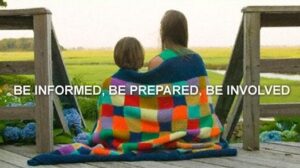
Click here for more information, including a printer-friendly list of supplies. In addition to getting a kit, be sure to Make a Plan, Be Informed, and Get Involved!
How to Shelter in Place
“Shelter-in-place” means to take immediate shelter where you are at home, at work, at school, or in between. It may also mean “seal the room;” in other words, take steps to prevent outside air from coming in. This is because local authorities may instruct you to “shelter-in-place” if chemical or radiological contaminants are released into the environment. It is important to listen to TV or radio to understand whether the authorities wish you to merely remain indoors or to take additional steps to protect yourself and your family.
How to make an Effective Emergency Planning?
*At Home
- Choose a room in advance for your shelter. The best room is one with as few windows and doors as
possible. A large room, preferably with a water supply, is desirable something
like a master bedroom that is connected to a bathroom
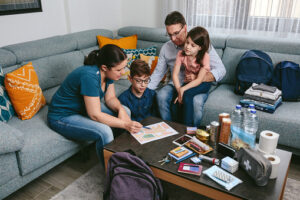
- Contact your workplaces, your children’s schools, or nursing homes where you may have family, and your local town or city officials to find out what their plans are for “shelter-in-place.”
- Find out when warning systems will be tested. When tested in your area, determine whether you can hear or see sirens and/or warning lights from your home.
- Develop your own family emergency plan so that every family member knows what to do. Practice it regularly.
- Assemble a disaster supplies kit that includes emergency water and food supplies.
*At Work
- Help ensure that the emergency plan and checklist involve all employees. Volunteers or recruits should be assigned specific duties during an emergency. Alternates should be assigned to each duty.
- The shelter kit should be checked on a regular basis. Duct tape and first aid supplies can sometimes disappear when all employees know where the shelter kit is stored. Batteries for the radio and flashlight should be replaced regularly
*In General
- Learn CPR, first aid, and the use of an automated external defibrillator (AED). (Contact Me for the next class or for more information at 575 607 6898.)
How will I know when I need to “shelter-in-place”?
Fire or Police department warning procedures could include:
- “All-Call” telephoning – an automated system for sending recorded messages, sometimes called “reverse 9-1-1”.
- Emergency Alert System (EAS) broadcasts on the radio or television.
- Outdoor warning sirens or horns.
- News media sources – radio, television, and cable.
- NOAA Weather Radio alerts.
- Residential route alerting – messages announced to neighborhoods from vehicles equipped with public address systems.
Note: Facilities that handle potentially dangerous materials, like nuclear power plants, are required to install sirens and other warning systems (flash warning lights) to cover a 10-mile area around the plant.
For more information, contact any of the following:
For checklists to help prepare to shelter-in-place in your home, at work, in your car, or at school or daycare, read How Do I Shelter-in-Place?
- Your local American Red Cross chapter
- Your state and local health departments
- Your local emergency management agency
- CDC Public Response Hotline
English 1-888-246-2675
Spanish 1-888-246-2857
TTY 1-866-874-2646)
Additional Considerations for Businesses
Encourage all of your employees to have a Portable Kit customized to meet personal needs, such as essential medications. In addition:
- Keep copies of important records such as site maps, building plans, insurance policies, employee contact and identification information, bank account records, supplier and shipping contact lists, computer backup files, emergency or law enforcement contact information, and other priority documents in a waterproof, fireproof portable container. Store a second set of records at an off-site location.
- Talk to your co-workers about what emergency supplies the company can feasibly provide if any, and which ones individuals should consider keeping on hand.
Information provided by Dept. of Homeland Security, FEMA, CDC, ARC, Citizens Corp. Gov, and Curry County LEPC. For more information, citizens may visit www.ready.gov and www.citizencorps.gov
Safety Alerts are a publication of information from various sources to share with the community. The information contained in this newsletter has been obtained from sources believed to be reliable, and the editors have exercised reasonable care to assure its accuracy. However, Ken does not guarantee that the contents of this publication are correct. We welcome topics of interest from our readers. Material may be rewritten to conform to newsletter space. The material should be addressed to Ken Oswald, Safety Manager, 583 US 70, Clovis NM 88101.
Ken O


